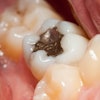
Did you ever try to bake a cake and forget to include one of the ingredients? My wife is an excellent baker and one year, for her birthday, I decided to bake her a birthday cake by myself. I got out the cookbook; got out all the ingredients, so I thought; and proceeded to follow the recipe. She asked me, "Rob, would you like some help?" to which I quickly replied, "No thank you. I've got this under control."
In the end, my cake was a flop. While mixing the dry ingredients, I forgot to include the baking powder. Because of that one missing ingredient, the cake didn't rise; it came out of the oven looking like a brick instead of a nice moist, yellow cake.
As you prepare for 2021, be sure to include all the necessary ingredients in your plan. Often, I see dentists do no planning, or when they do, they focus solely on the "money side" of things. This year, I want you to plan for your upcoming year using your hands, your head, and your heart. It's a comprehensive strategy that will set you up for success in all areas of your practice. Planning sessions like this take time. They require the participation and the input of your entire team. I suggest you set aside a half-day or, better yet, a whole day to do this planning. With all the pandemic challenges practices faced in 2020, it's important to take the time to do a thorough evaluation for the upcoming year.
The hands
When I refer to the "hands" part of this process, I'm talking about two specific aspects of your practice: your purpose and the actual procedures you perform. First, are you clear about your purpose? Ask yourself and your team, "Who are we and what are we about?" Does your mission statement realistically reflect who you are, or is it just lip service? The clearer you are about your mission, your purpose, and who you are, the more productive you will be.
 Dr. Robert Maguire.
Dr. Robert Maguire.Second, with regard to the "hands" aspect of your practice, look at the procedures you actually did in 2020. What procedures did you do most often? What percentage of your practice revenue came from those procedures? What procedures were the most successful for you? Of them, which ones did you enjoy doing the most or the least? Once you've gathered the data, decide on which procedures you'll continue to do.
Perhaps there are some you'd like to stop doing or new ones you'd like to start doing. Maybe you'd like to learn how to place implants. Maybe you'd like to be more comprehensive with your new patient examination and treatment planning. Take the time to figure out what you want, evaluate what's working and not working, and then set goals to make your desires a reality.
Perhaps you will need more training. If so, incorporate into your budget the time and the money needed to accomplish it. In your planning also include your teams' insights, their suggestions, and their personal goals. Are there expanded functions they'd like to learn to help the practice grow? Some examples might include doing photography, laser training, or expanded-function dental assistant duties. Answering questions like these will help you and your team collectively decide on the procedures you'll want to include in the upcoming year.
The head
Next, look at the "head" aspect of your practice. Here, I'm referring to the managerial aspects of your practice. In this section, look at everything related to the business side of things. How was your schedule over the past few months (probably a challenge in the midst of the pandemic)? How often did you reach your stated monthly goals? How much income did you yourself generate? How much came from your hygiene department? What was your percentage of collections and your frequency of broken appointments? Did you prebook for new patients? How many new patients did you see each month and how long did they have to wait for an appointment? When was the last time you raised your fees? If you participated with preferred provider organization (PPO) plans, how much did you write off during this past year? What percentage of your total patients participated in your PPO plans? How were your collections as a percentage of your production? In addition, use an "aging accounts receivable report" to see how much money is owed to you and to help you decide if your collection systems and policies need to be modified.
In addition to looking at your collection and production, you'll want to examine your expenses including the major ones like supply costs, lab expenses, and payroll. With these metrics, think of ways to decrease your overhead and increase your profitability. There are other financial aspects of your practice you can evaluate; this is just a sampling of the ways to look at the "head" aspect of your practice. However, just looking at these will provide you with a wealth of valuable information.
The heart
The last area of your practice that you'll want to include in your planning is your "heart." This is the section where you evaluate your team and your patients. With regards to your team, how are they getting along with one another? Are they productive and collaborative? More personally, do you enjoy working with them? Identify growth opportunities for your team. What are their individual strengths? What are their individual and collective goals for 2021? In your assessment, if you see that your team is struggling, what steps can you take to help them? Perhaps you and your team would benefit from some leadership and communication training. Years ago, my team and I received training in the DiSC (dominance, influence, steadiness, and conscientiousness) personality assessment. From it, we learned to better communicate with each other and with our patients. As a result, that year, our patient treatment acceptance rate soared. That year, our practice collections increased by 10%. These results proved a known fact that a more cohesive team is a more productive team. Your team is like the baking powder in a cake recipe. With it, the cake will rise. Without it, chances are great it will fail.
Another "heart" aspect of your practice to evaluate is your patient satisfaction. Google reviews will provide valuable information in that regard. Also, look at the list of patients who have left your practice. Do you know why? Decide on the steps you can take to improve your patient communication and satisfaction.
Regarding your new patients, take a look at your referral sources to see where your new patients are coming from. What new steps will you take to foster new patient referrals? Social media is a great source for information about patient communication and satisfaction. How are your Google reviews? When is the last time you updated your website? How's your presence on Instagram or Facebook? Years ago, patients used the Yellow Pages to look for new dentists in their area. Today, everybody uses Google. Having a viable presence on social media is essential for your practice success.
As you begin to plan for 2021, remember, dentistry is a people business. Remember the story about my cake. It was a flop because I left out only one ingredient, the baking powder. As you review and make plans for the upcoming year, be sure to include all the ingredients: the hands, the head, and the heart. When you do, I am confident that 2021 will be the year you, your practice, and your team experience more joy, fulfillment, and financial success.
Dr. Robert Maguire is a dental speaker, coach, practice consultant, and DiSC (dominance, influence, steadiness, and conscientiousness) trainer who is passionate about leadership and communication. If you'd like more information about him and how he can help you and your team communicate better, visit his website or email him at [email protected].
The comments and observations expressed herein do not necessarily reflect the opinions of DrBicuspid.com, nor should they be construed as an endorsement or admonishment of any particular idea, vendor, or organization.



















